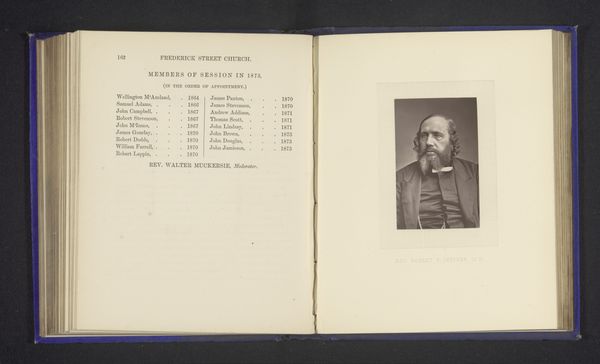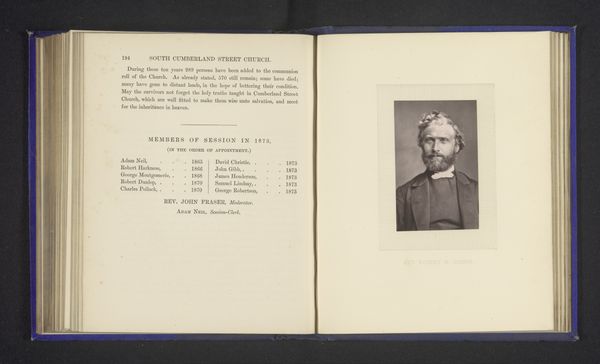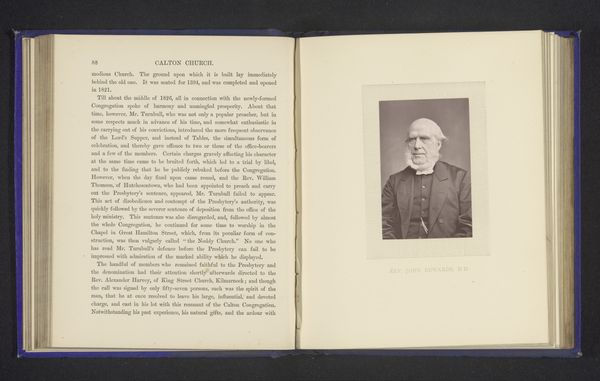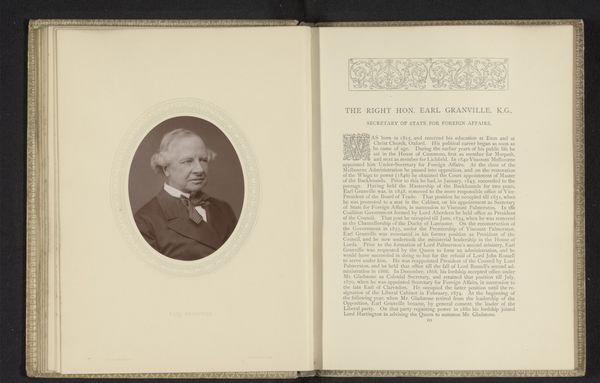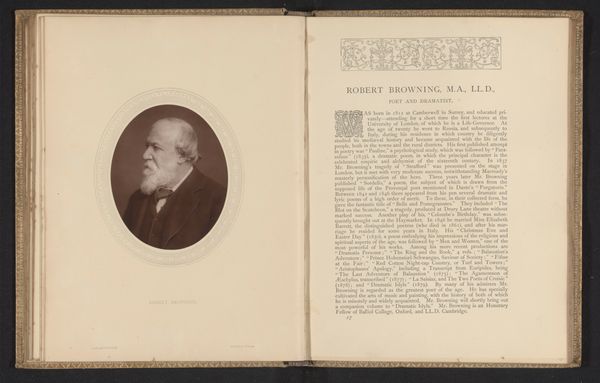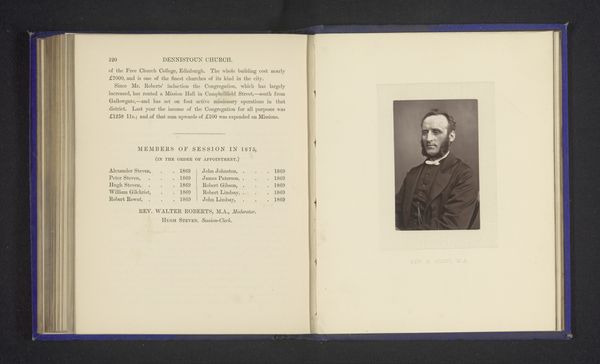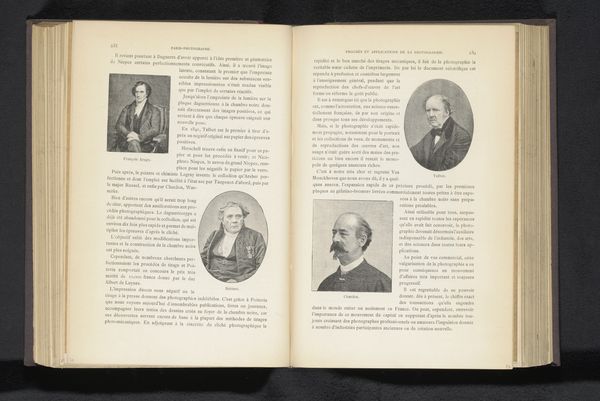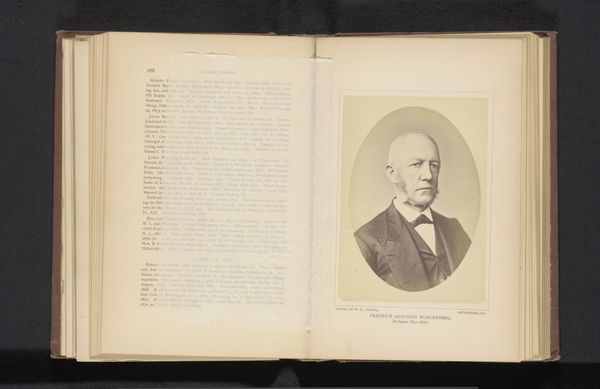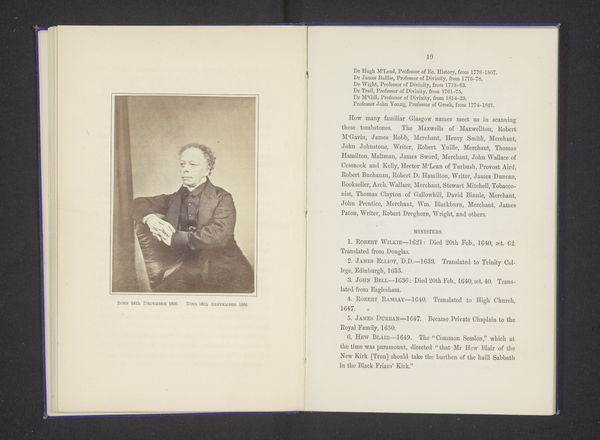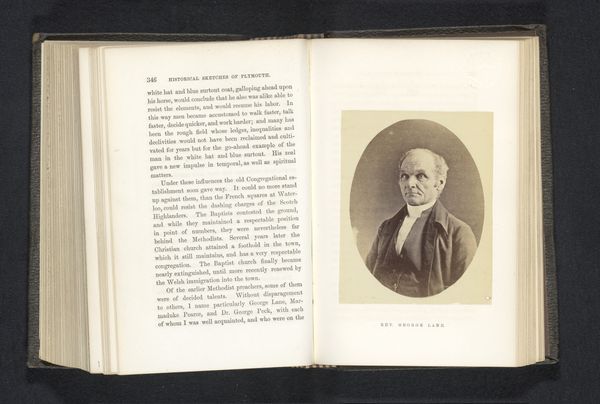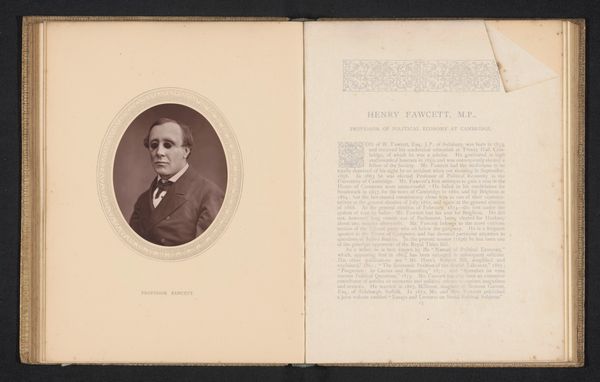
print, paper, photography, gelatin-silver-print
#
portrait
# print
#
paper
#
photography
#
gelatin-silver-print
#
paper medium
Dimensions: height 87 mm, width 57 mm
Copyright: Rijks Museum: Open Domain
Curator: I see here "Portret van John Ker," a gelatin silver print by Thomas Annan, created before 1875. It has a rather somber tone, don't you think? A man in dark clothing, face stern. Editor: Absolutely. It strikes me as an exercise in the very specific capabilities of early gelatin-silver printing. Look at the meticulous detail on the suit and how the texture seems to swallow some of the light. You have a material relationship with it from the outset. Curator: I am thinking about Ker and his place in society when this portrait was commissioned or acquired. Given Annan's focus on documenting social issues, does this formal portrait of an individual become a statement about power structures or even class identity at the time? Editor: Perhaps, though the deliberate contrast and careful execution also speak to the photographer’s skills—mastery over this fairly new process to achieve a sharp result on coated paper. And let’s not ignore the cost; early photography demanded investment. So the labor, materials and resources point to something quite specific regarding photographic portraits from the time. Curator: And considering photography was increasingly accessible during that time, maybe this portrait functions, in some way, to further legitimize his status—linking photography’s democratic reach with elite social circles? Perhaps to disseminate the figure of John Ker, and what he represents, more widely? Editor: Precisely. We are seeing how a photograph works and who it's meant for. It's about crafting an image for the desired viewer, considering who could access and "consume" such material in that moment. It's all a part of the broader context, and a carefully designed photograph like this tells the beginning of the story of that reception. Curator: This photograph of Ker encourages us to remember to view photographic portraits as powerful objects shaped by cultural conditions of the day. Editor: And also to contemplate how process and material are inherently part of art's socio-economic context, dictating a lot about how a certain artwork—in this case, photography—fits within the wider landscape.
Comments
No comments
Be the first to comment and join the conversation on the ultimate creative platform.
